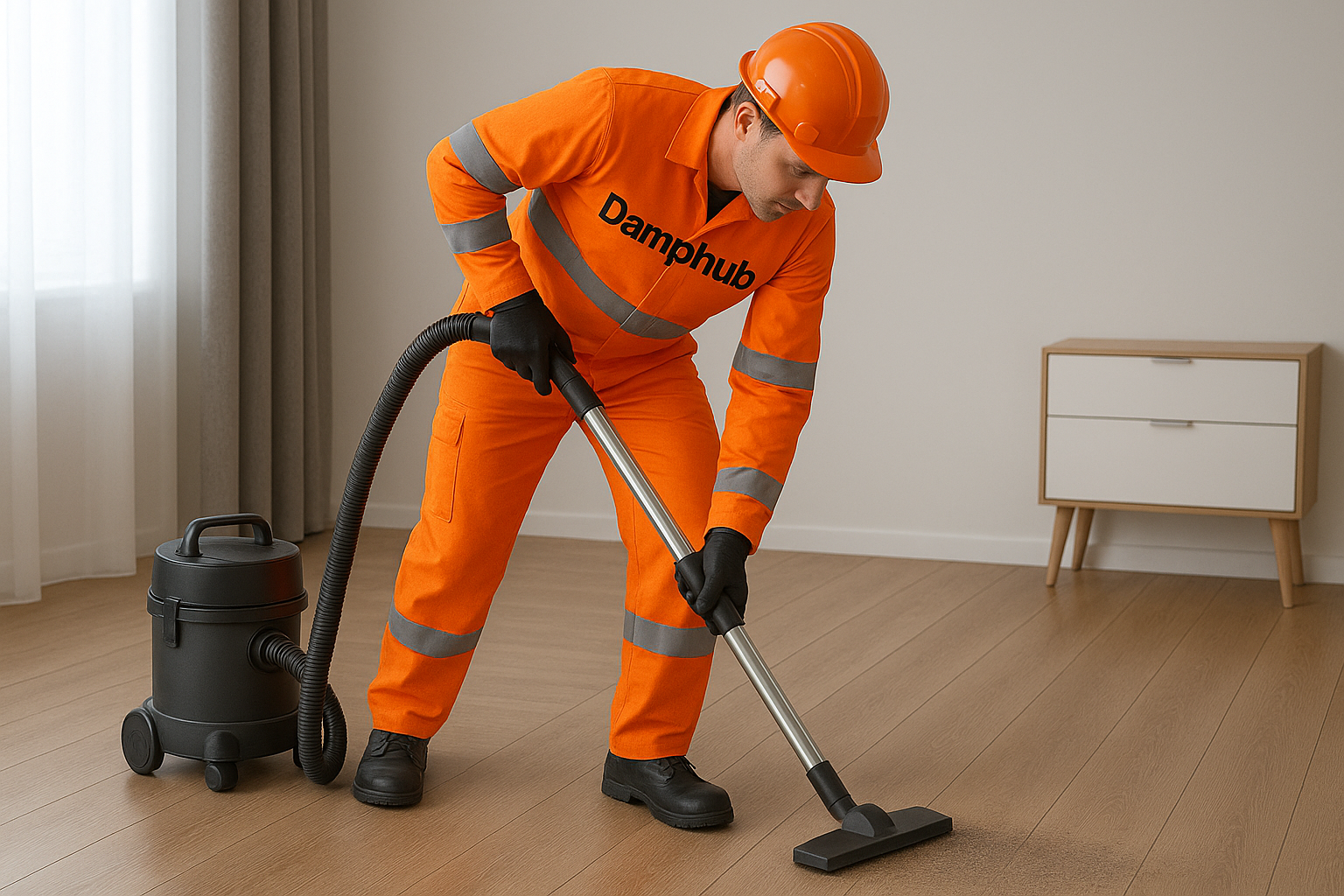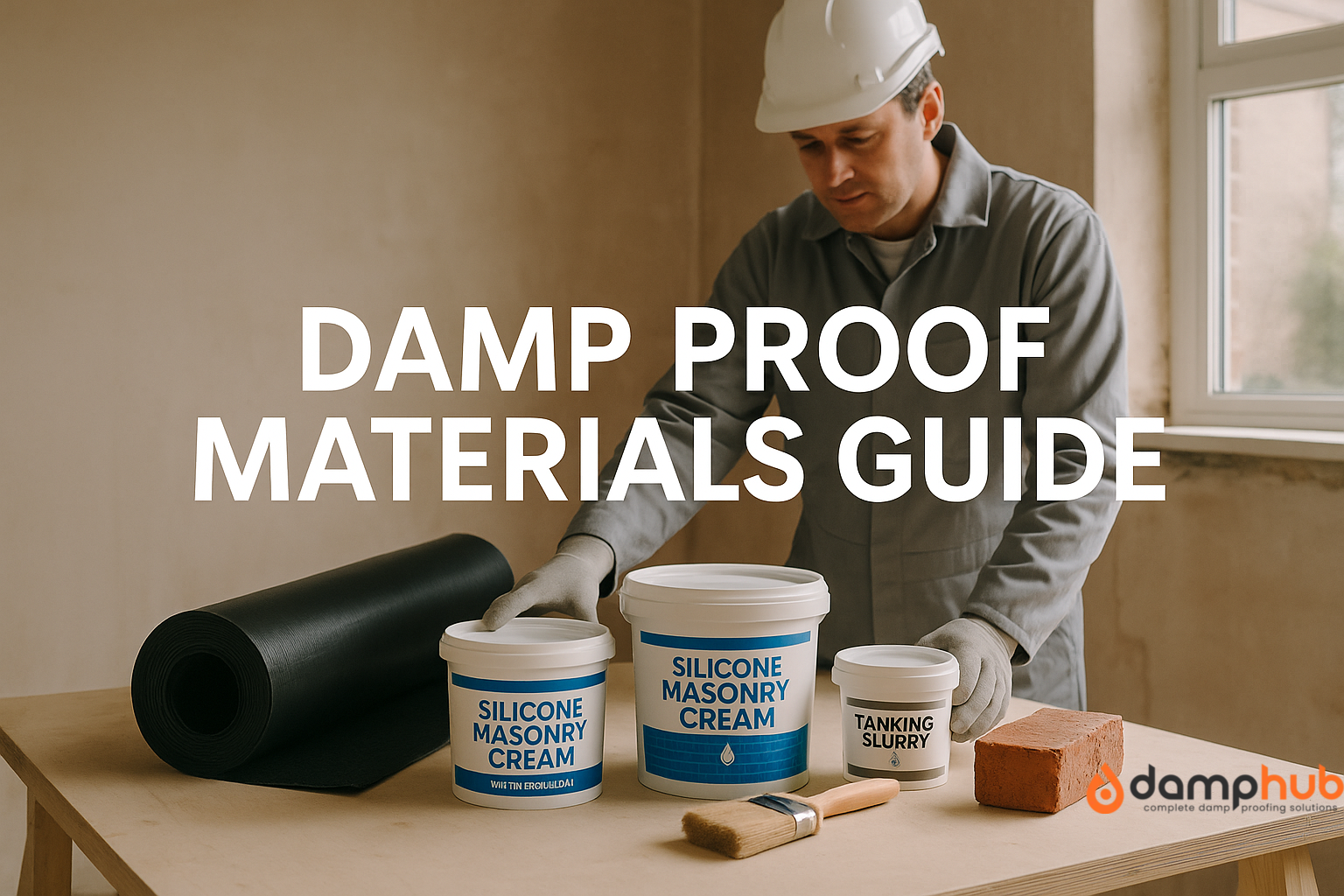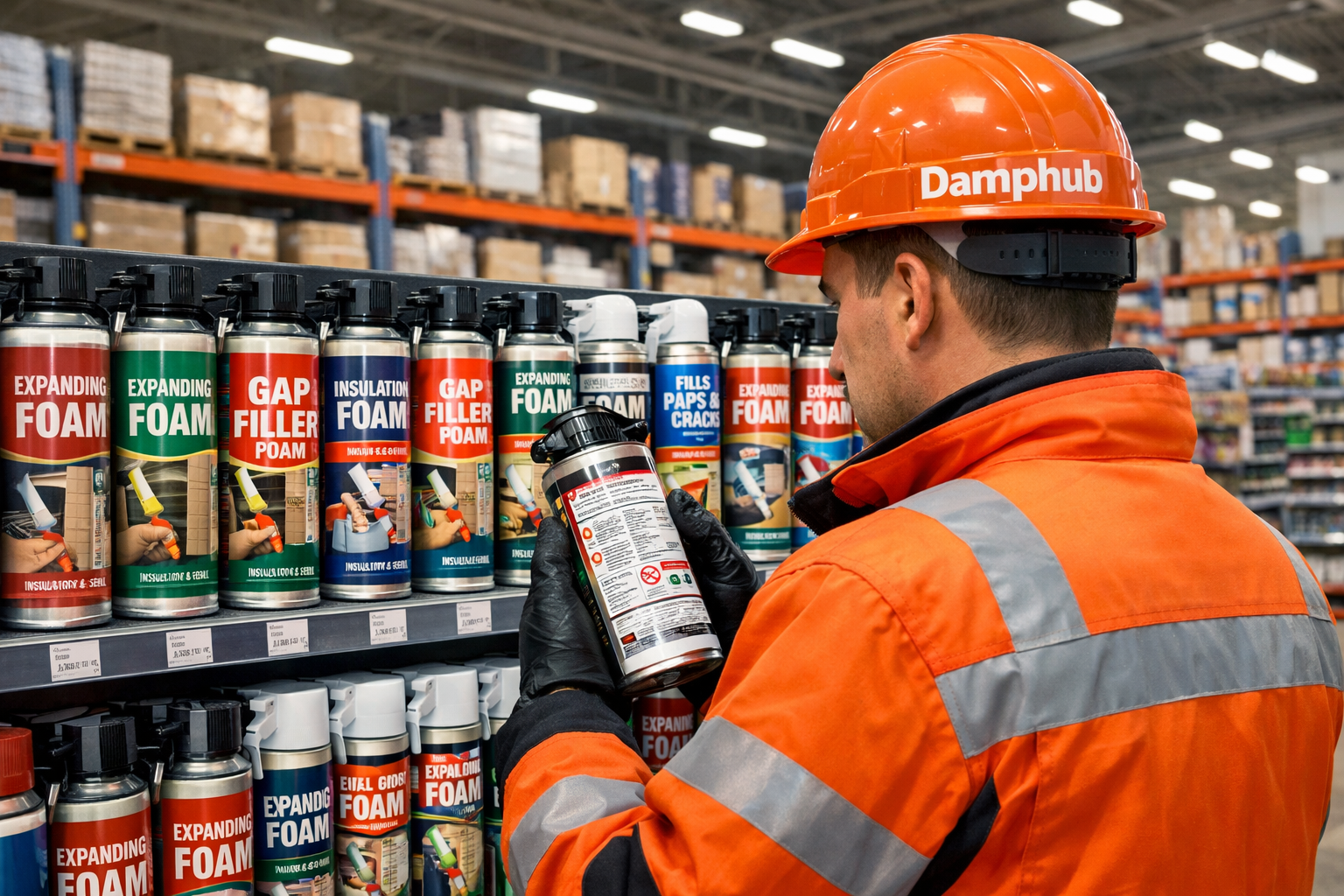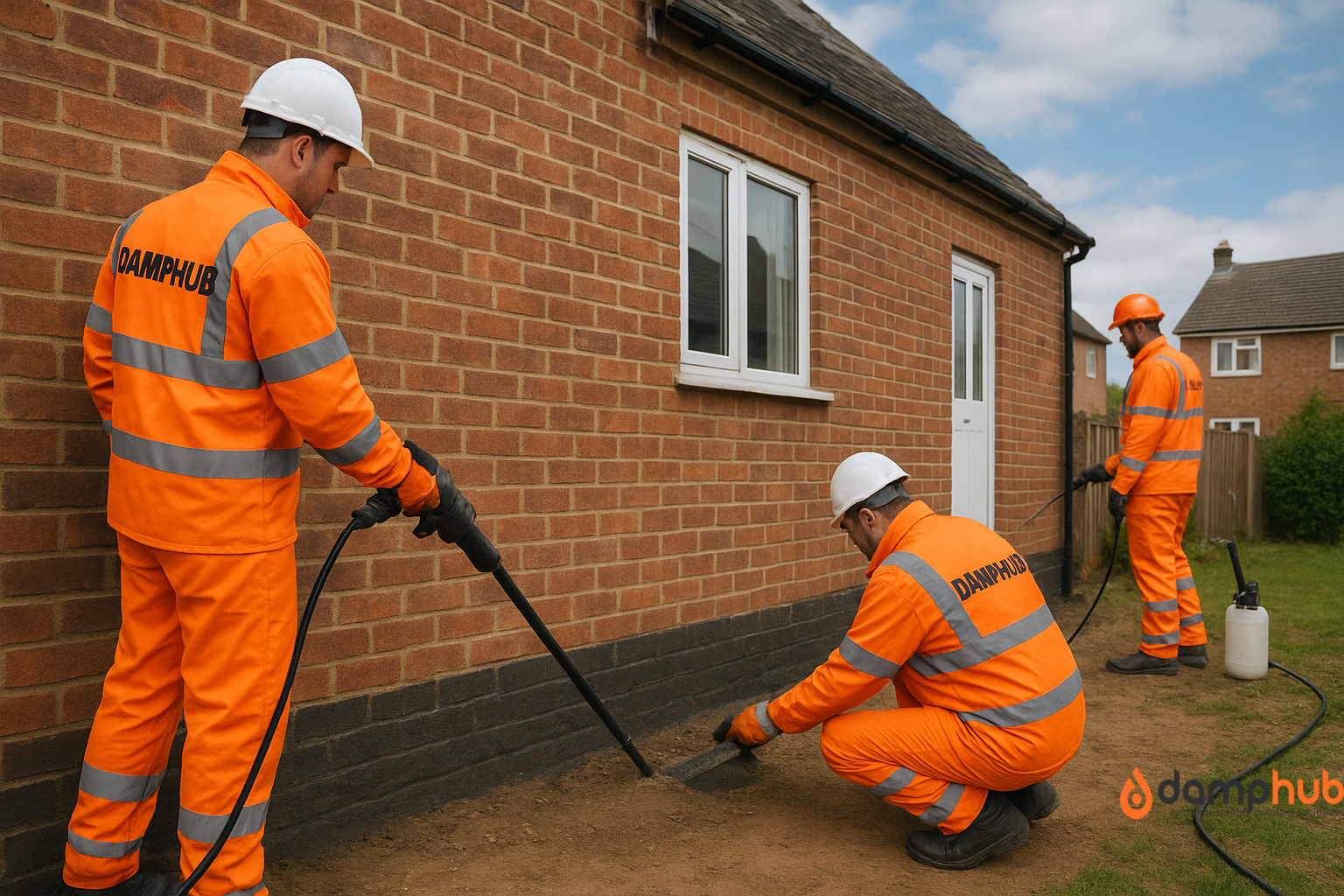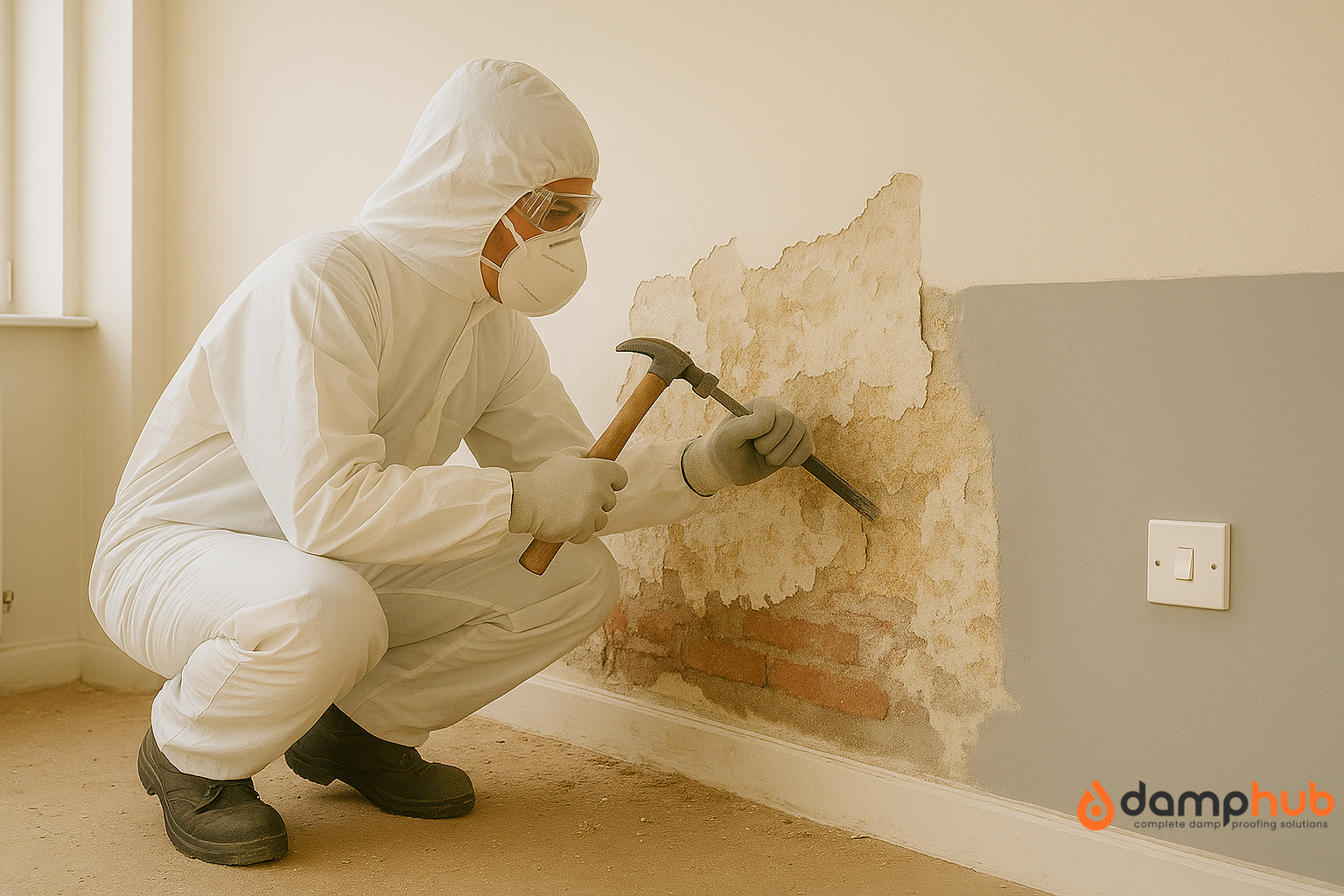
Damp is a persistent and potentially damaging issue in homes.
Effectively dealing with it requires a structured approach: identifying the type and cause of dampness, applying targeted solutions, and implementing long-term prevention strategies.
This guide walks you through each stage to help protect your property from moisture damage and maintain a healthy indoor environment.
Step 1: Identify the Type and Source of Damp
Before fixing damp, you must identify what kind of damp you’re dealing with, because each one has different causes and needs a specific fix.
Misdiagnosing it will waste time and money.
Condensation Damp – How to Recognise It
Condensation happens when moist air indoors meets a cold surface, like a wall or window, and turns into water droplets.
This is very common in homes with poor airflow, especially in winter.
Where it appears: Kitchens, bathrooms, and bedrooms — places where steam or moisture builds up.
Signs include:
- Steamy windows every morning.
- Black mould is growing in corners, on window frames, or behind furniture.
- Cold, damp-feeling walls.
- A musty smell in the air.
Rising Damp – How to Recognise It
Rising damp comes from groundwater moving upwards through your wall due to capillary action. This only happens when the wall’s built-in damp-proof course (DPC) is missing, damaged, or bridged.
Where it appears: Lower sections of internal walls, up to about 1 metre high.
Signs include:
- Blistered or bubbling paint.
- White powdery salt stains on the wall surface.
- Peeling skirting boards or warped flooring.
- A clear tide mark showing the height reached by the damp.
Penetrating Damp – How to Recognise It
Penetrating damp happens when rainwater gets through your external walls, roof, or window seals.
It’s usually due to cracks, leaks, or building damage that allows water in from the outside.
Where it appears: Any part of a wall or ceiling, but especially near chimneys, windows, or gutters.
Signs include:
- Random damp patches that grow after rain.
- Peeling or flaking paint on walls.
- Mould in isolated areas not linked to condensation.
- Drips or staining near the ceiling edges or around windows.
Step 2: Short-Term Damp Control Measures
These are immediate steps you can take before full repairs, especially useful if professional help is delayed or you’re still assessing the source.
1. Increase Natural Ventilation
Letting fresh air in helps remove excess moisture that would otherwise settle on walls or ceilings.
- Open windows at least 10–15 minutes every day, even in winter.
- Open internal doors (except bathrooms during showers) to improve airflow between rooms.
- Where possible, keep trickle vents in windows open for background ventilation 24/7.
2. Use Kitchen and Bathroom Extractor Fans
These fans remove moisture from cooking and showers, which are major damp sources in homes.
- Always run the fan while cooking or bathing.
- Let it continue running for 10–15 minutes afterwards to clear the remaining steam.
- If the fan is old or weak, consider upgrading to a more powerful model with a humidity sensor.
3. Avoid Indoor Laundry Drying
Drying clothes indoors releases litres of moisture into the air.
- If you must dry indoors, place a dehumidifier nearby and open a window.
- Never dry laundry on radiators — it increases condensation risk dramatically.
- Use a vented tumble dryer if available.
4. Keep Indoor Temperatures Stable
When heating is turned on and off sharply, walls get cold fast, inviting condensation.
- Keep a low, steady heat throughout the day in colder months.
- Set thermostats between 18–21°C for living areas.
- Don’t leave rooms unheated if they’re prone to damp.
5. Move Furniture Away From Walls
When furniture sits tightly against cold walls, air can’t circulate, and moisture collects behind.
- Pull sofas, beds, or wardrobes away by at least 10 cm.
- Avoid overstuffing wardrobes, especially in bedrooms — clothes need breathing space.
- In tight spaces, consider drilling ventilation holes into the back of wardrobes or cupboards.
👉 Related Blog: How to Treat Damp Walls Internally: A Step-by-Step Guide
Step 3: Targeted Fixes for Each Type of Damp
Condensation Damp – How to Fix It
Condensation forms when warm, moist air hits a cold surface like a window or external wall and turns into water.
It’s especially common in bathrooms, kitchens, or bedrooms where there’s poor airflow.
1. Boost Ventilation (Let moist air escape before it settles)
Without ventilation, everyday activities like cooking, showering, or even breathing release moisture into the air.
When this moist air is trapped indoors, it finds the coldest surface and turns into condensation.
You can fix this by:
- Opening windows daily to let moisture out.
- Installing extractor fans in kitchens and bathrooms to pull damp air outside.
- Fitting air bricks or trickle vents in windows for constant background ventilation — these work even when the windows are shut.
2. Use Dehumidifiers (Lower air moisture directly)

Dehumidifiers pull excess moisture from the air and collect it as water.
They’re useful if your home struggles with humidity due to poor ventilation or damp weather.
Place them in rooms where condensation appears most often, bedrooms or basements.
Keep doors and windows closed while the machine runs to make it more effective.
3. Add Thermal Insulation (Make cold walls warmer)
Cold surfaces attract moisture.
If a wall is poorly insulated, it stays cold and becomes a magnet for condensation.
Insulation options include:
- Insulated plasterboard: Installed on the inside wall to keep the surface warm.
- Thermal wallpaper: A cheaper alternative for smaller rooms.
- Cavity wall insulation: If your walls have a cavity (gap), filling it helps stop cold bridging.
4. Modify Habits (Reduce how much moisture you release)
Every day actions can cause major moisture build-up:
- Always use lids when cooking to stop steam escaping.
- Keep bathroom doors closed while showering and run the fan during and after.
- Avoid drying clothes indoors. If you must, open a window or use a vented dryer.
- Avoid portable gas heaters (unflued), which release moisture as they burn.
Rising Damp – How to Fix It
Rising damp comes from water in the ground moving up through bricks and mortar.
You’ll spot it by tide marks, bubbling paint, or white salty patches on walls up to about 1 metre high.
1. Inspect the Damp-Proof Course (DPC)
Your house should have a horizontal barrier — usually a slate or plastic strip — built into the wall about 15 cm above ground level.
If it’s missing, damaged, or bridged (covered by soil or render), moisture can creep upward. Check for:
- Raised flower beds or driveways touching the wall above the DPC level.
- Render or plaster that covers the DPC and allows moisture to rise unnoticed.
👉 Read more from us: Damp Proofing UK – Costs, Rules, and What You Need to Know
2. Install or Repair a DPC
If the DPC has failed or was never installed, professionals can inject a chemical damp-proof course into the wall to stop water rising.
This creates a waterproof barrier inside the wall.
Sometimes a physical DPC (like a membrane) is inserted during a major renovation.

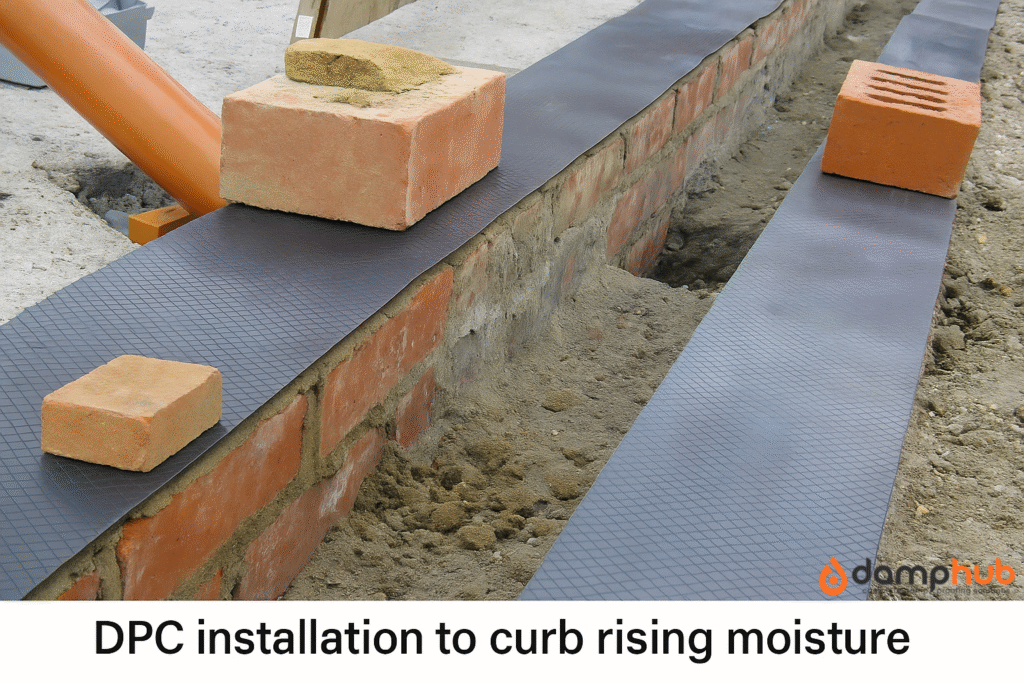
3. Replace Damaged Plaster
Rising damp brings salts from the ground.
These salts stay in the plaster even after the wall dries and attract moisture again.
Affected plaster must be hacked off and replaced with a salt-resistant render or renovating plaster. Skipping this step leads to recurring damp.
4. Check Floor Voids
In older houses with timber floors, moisture can rise from below. Check:
- That underfloor ventilation bricks aren’t blocked.
- Whether the subfloor needs added airflow.
- If needed, the floor may need to be rebuilt with proper damp-proof membranes (DPMs).
🔍 Related Guide: How to Treat Damp Walls Before Painting
Penetrating Damp – How to Fix It
Penetrating damp comes from water leaking through external walls, roofs, or window gaps.
You’ll often find it in isolated patches, especially after heavy rain.
1. Repair External Walls
Look for cracks in bricks, loose mortar (pointing), damaged render, or gaps around pipes.
These allow rain to seep through the wall.
Fix by:
- Repointing bricks.
- Patching render.
- Filling cracks with masonry filler or sealants.
2. Fix Gutters, Downpipes, and Roof Flashings
Overflowing or broken gutters allow water to run down walls, soaking them over time.
Inspect during rain:
- Are downpipes leaking?
- Are gutters clogged?
- Is water splashing against the wall?
Also check roof flashings (metal strips around chimneys or valleys) — if they’ve lifted or corroded, rain will find a way inside.
3. Seal Windows and Doors
Water can leak in around frames if the sealant (caulk) is cracked or missing. Check:
- External caulking around windows.
- Damp patches under windowsills.
Re-seal with high-quality exterior-grade silicone.
4. Improve Ground Drainage
If the ground outside your home slopes toward the wall, water pools at the base and soaks in.
Fix this by:
- Reshaping ground levels to slope away.
- Installing French drains or surface gullies.
- Ensuring downpipes drain into proper soakaways or storm drains.
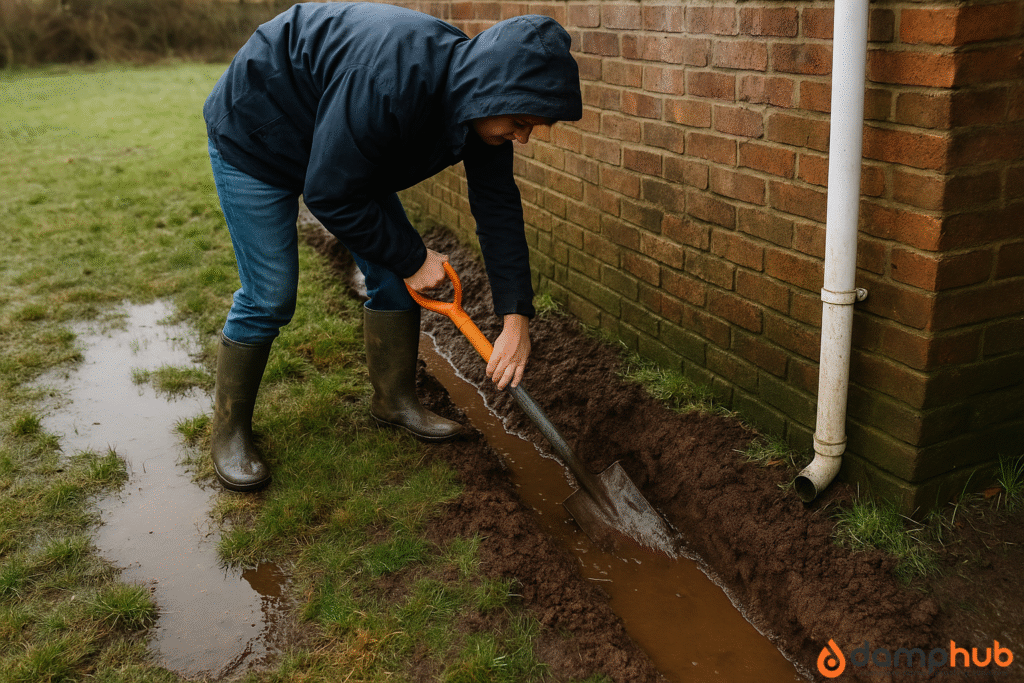
Step 4: Long-Term Damp Prevention
Fixing damp is only half the job — keeping it away permanently needs long-term solutions.
1. Install Advanced Ventilation Systems
For homes with chronic condensation, consider mechanical solutions:
- Positive Input Ventilation (PIV) systems draw in filtered air from the loft and push stale, moist air out, lowering humidity across the home.
- MVHR (Mechanical Ventilation with Heat Recovery) systems work in airtight homes, extracting damp air and replacing it with dry, warm air — ideal for modern or refurbished homes.
2. Insulate to Prevent Cold Spots
When internal walls or ceilings are too cold, they attract moisture. Adding insulation keeps surfaces warm and prevents condensation.
Options include:
- Loft insulation: Reduces heat loss from the ceiling.
- Internal wall insulation: Especially important on north-facing or shaded walls.
- Pipe lagging: Stops cold pipes attracting condensation in basements or cupboards.
3. Use Mould-Resistant Finishes
After fixing damp issues, use the right materials to stop it from returning:
- Anti-mould paint: Contains fungicides that prevent regrowth.
- Breathable finishes: Allow moisture to escape instead of trapping it — ideal for solid walls.
- Waterproof render: Protects external walls from soaking during rain.
👉 Related Blog: Who Should Pay for a Damp and Timber Report?
4. Maintain Regularly
Neglected homes are prone to damp. Create a seasonal checklist:
- Clean gutters twice a year (spring and autumn).
- Check for roof damage after storms.
- Service extractor fans yearly.
- Re-seal bathroom tiles and windows as needed.
- Deal with leaks immediately — never wait.
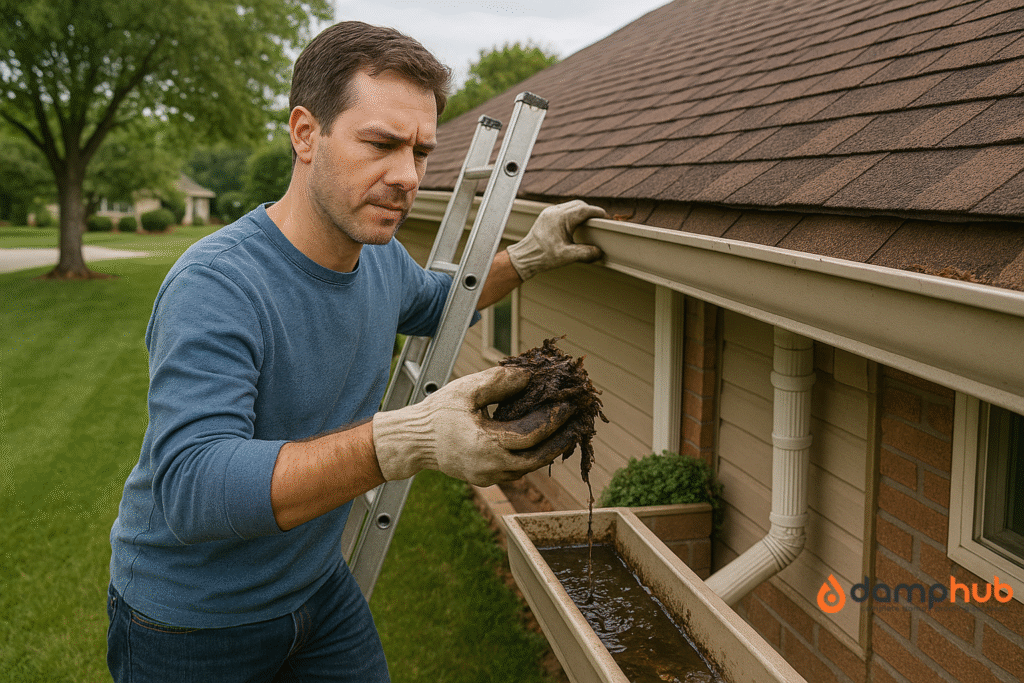
FAQs
Can I damp-proof my house myself?
Yes, minor damp issues can be tackled DIY—like improving ventilation, sealing gaps, or using waterproof paints.
But for rising damp or structural problems, professional damp proofing is strongly recommended.
DIY methods may mask the issue temporarily, but won’t solve the root cause.
How do you measure damp in a house?
Damp is typically measured using a moisture meter, which gives a percentage reading of moisture in walls, floors, or ceilings.
Readings above 15–20% often indicate a problem.
Thermal imaging and calcium carbide tests are also used by professionals for more accurate results.
What is the permanent solution to a damp wall
A permanent solution involves identifying the source and fully treating it.
For rising damp, install a new damp proof course and replace salt-contaminated plaster.
For penetrating damp, repair leaks and ensure proper external drainage.
Without addressing the root cause, damp will keep coming back.
How do I stop damp in my bedroom?
Improve airflow by opening windows or using a dehumidifier.
Check for cold spots, leaks, or blocked vents.
Avoid drying clothes indoors and ensure the walls are insulated properly.
If the issue is persistent, you may need a professional damp survey to find the exact cause.
How to treat damp walls internally, DIY?
Start by removing mould with antifungal cleaner, then allow the wall to dry completely.
Seal cracks, repaint with anti-damp paint, and improve ventilation.
For rising or penetrating damp, internal fixes won’t last long—you’ll need to treat the external source to prevent recurrence.
How to identify where the damp is coming from?
Look for clues like tide marks (rising damp), damp patches after rain (penetrating damp), or condensation near windows (humidity-related).
Use a moisture meter to trace moisture levels. If unsure, a professional survey can pinpoint the exact source with specialist tools.

